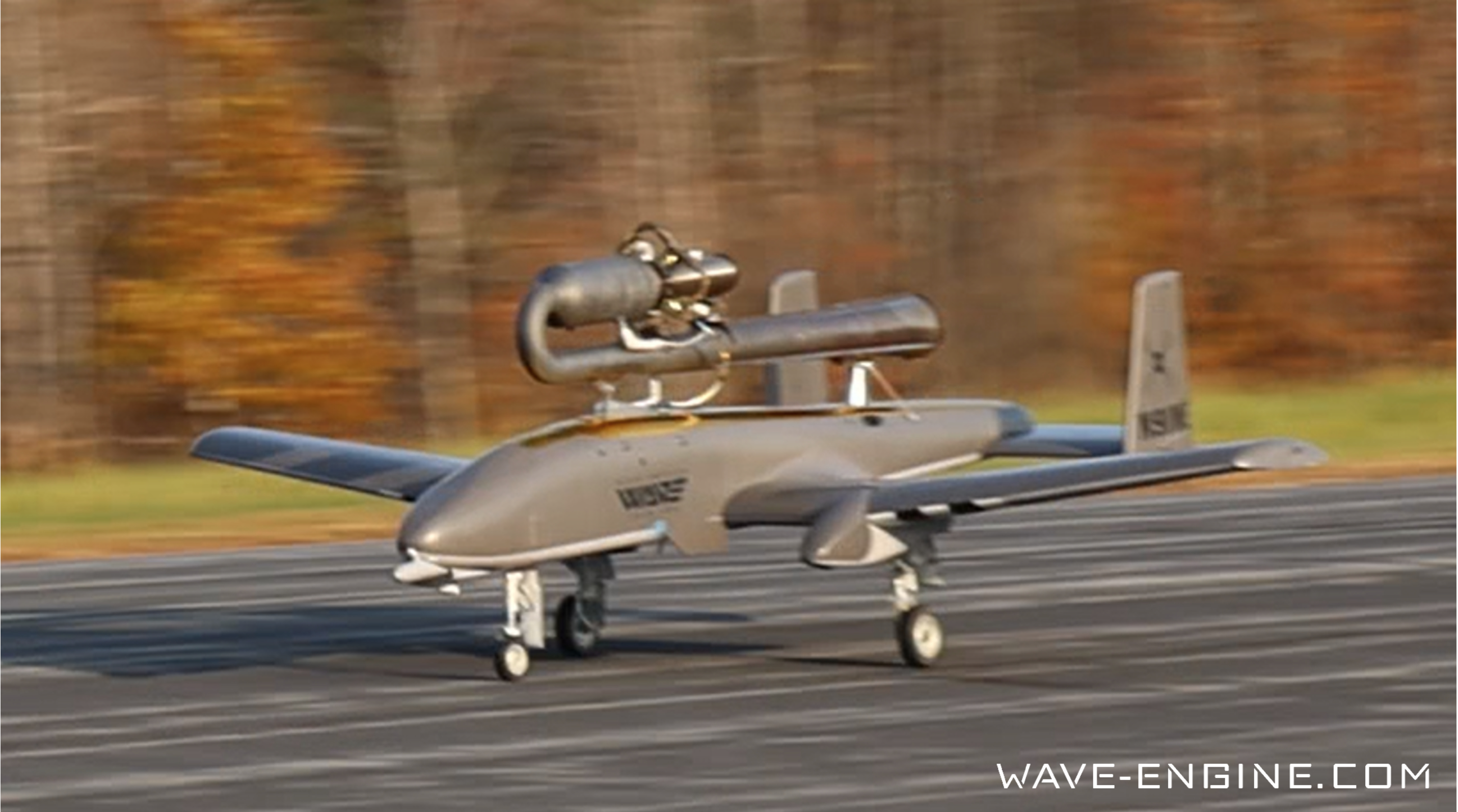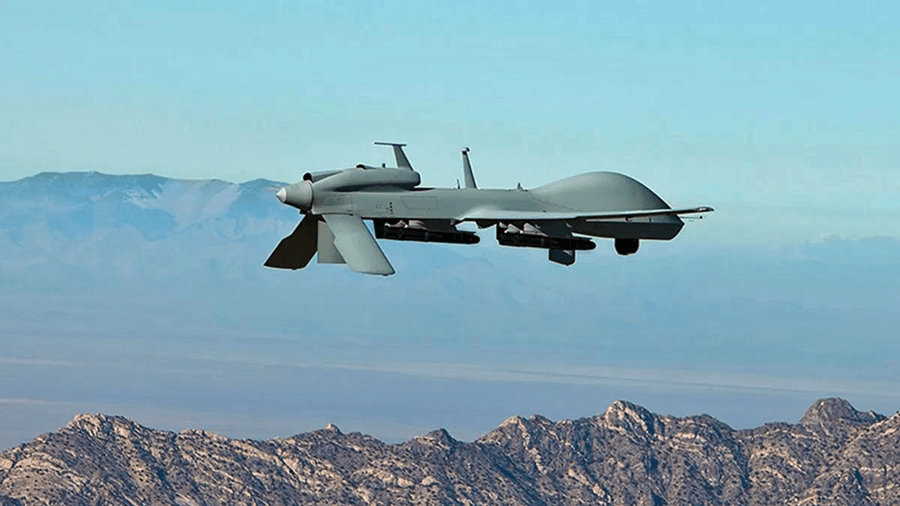-

Drone Makes Physical Contact with Surface to Perform Non-Destructive Testing
In this episode, the Roswell Flight Test Crew speaks with Johan Mlouka, the Vice President for Sales at Voliro. The company’s drone is designed to make physical contact with a surface at any angle in order to perform non-destructive testing: Measuring the thickness of metallic structural elements to confirm that they meet the minimum tolerance for safe operation. It has its application in large-scale industrial settings, such as oil and gas development, chemical processing and maritime applications. The Voliro drone is designed to replace human inspectors doing hands-on testing of materials in dangerous environments that would otherwise require scaffolding, rope repelling or other potentially hazardous and time-consuming activities. -

Part 107.39: ASTM Approved Parachute for Operations Over People
In this episode, the Roswell Flight Test Crew speaks with Orin Aviram, the Vice President of Sales at ParaZero Technologies about his company’s latest offering: the SafeAir flight termination system for the DJI Mavic 3 series aircraft. The new system is fully compliant with the ASTM F3322-22 standard, allowing it to qualify small drones for operations over people. The system is reusable, but in order to maintain ASTM certification, it must be re-packed by an authorized service center. -

SwissDrone: Two Main Propellers Intermesh, No Tail Rotor
In this episode, the Roswell Flight Test Crew speaks with Arangan Varatharajah, head of flight operations for SwissDrone about the company’s SDO 50 uncrewed rotorcraft. It features two intermeshed primary rotors in the style of a Flettner helicopter, and no tail rotor. Powered by a jet turbine, the SDO 50 has a maximum take-off weight of 192 pounds and a maximum payload capacity of 88 pounds. It is capable of flying for more than three hours with a top speed of 44 miles per hour. Primary use cases for the aircraft include surveillance, search and rescue and large-scale infrastructure inspection. -

A2Z: Delivery Drones that Live on Top of Light Poles and Road Signs
In this episode, the Roswell Flight Test Crew speaks with Aaron Zhang, the CEO of A2Z Drone Delivery about the latest developments in his company’s products. With the goal of keeping people and drones separate throughout all phases of the operation, A2Z has developed an elevated platform where its drones are able to land autonomously and re-charge, well clear of persons and property on the ground. This approach could be integrated into existing urban infrastructure, such as lighting polls and road signs. Also, using the company’s long-tether hoist systems, even people loading a delivery or receiving it on the ground do not get near the fast-turning propellers. -

SOTEN Drone: Japanese-Made, NDAA-Compliant, Swappable Payloads
In this episode, the Roswell Flight Test Crew speaks with Tyler Ackerman, the Manager for Channel Operations at ACSL. Based in Japan, ACSL builds the NDAA-compliant SOTEN drone. A folding quadcopter in the style of the DJI Mavic, the SOTEN incorporates a swappable payload system, giving the user immediate access to visible light, thermal and multispectral payloads. This allows the same aircraft to perform a wide range of missions, such as mapping, search and rescue and crop inspection. Payloads can be switched using a simple touch with one hand without the use of tools. -

2 Gas Engines + 4 Electric Motors = 2 Hours and 25 KG Payload
In this episode, the Roswell Flight Test Crew speaks with Eli Sayag, Vice President for Research and Development and Chief Technical Officer at CopterPIX, about the company’s new multirotor UAS: the Rhino. Described as the world’s first “Hybrid Parallel” drone, the Rhino achieves unheard of performance – being capable of flying for two hours with a 25 kilogram payload – with a unique propulsion system. The Rhino incorporates two gasoline engines which provide virtually all of the lift and thrust to support and maneuver the aircraft, while four battery-powered electric motors provide stability and allow the aircraft to maneuver. The company plans to scale up the platform to be able to transport a 100 kilogram payload. -

The Flying Propeller: A Two-Hour Drone for First Responders
In this episode, the Roswell Flight Test Crew speaks with Dennis Krause, the Chief Operating Officer and Co-Founder of Angel Aerial Systems. His company was at Commercial UAV Expo in September 2024 to promote the company’s fascinating new platform: the Trio. Developed specifically with public safety users in mind, the Trio takes off and lands like a tricopter but then, once airborne, turns into a “flying propeller.” The limbs supporting its three motors function as airfoils, allowing it to fly for two hours with an on-board battery capacity that would keep a conventional multirotor flying for 30 minutes. The Trio can fly for two hours, making it an ideal observation platform for first responders operating in tactical environments, such as firefighters and law enforcement. -

SunnySky ZMO: An Affordable VTOL Platform
In this episode, the Roswell Flight Test Crew speaks with Eddie Torres, the sales manager for SunnySky USA. The company is introducing a line of low-cost Vertical Take-Off and Landing (VTOL) aircraft, accessible to hobbyists and small commercial users. The ZMO Pro is a tri-copter design which can stay aloft for up to 45 minutes while carrying an action sports camera or DJI Air video system, to allow for a First-Person View (FPV) flying experience. The flight control system is compatible with Mission Planner, allowing it to perform autonomous, waypoint-driven missions. -

U.S. Drone Soccer: Have a Ball (or Five)!
In this episode, the Roswell Flight Test Crew speaks with Lina Pineros, the director of operations for U.S. Drone Soccer. The sport, which originated in South Korea, helps high school and college students develop technical and flight skills through an e-sports competition. Each team consists of five pilots assigned a specific role, such as the striker – the only participant able to score goals – as well as a forward, sweepers and defense. Individual rounds last for three frenetic minutes, with a brief break to swap batteries and effect repairs to damaged aircraft before resuming play. Three rounds constitutes a match, with the winner determined by cumulative score. -

Simple and Rugged Military VTOL Drone: ideaForge Switch
Hey, Crew!
Obviously, this video has been significantly delayed in its release. You have my apology for that, but I have been busy with several other projects – some of which must remain shrouded in mystery for the moment. However, here is one of them: https://a.co/d/aQnTS13, a coloring book for children entitled “DRONES: HOW THEY FLY” featuring Raven and Little Bird. Check it out! Now, on with the show!
In this episode, the Roswell Flight Test Crew speaks with Ankit Mehta, the CEO of ideaForge technology. The company has developed a multirotor-embed vertical take-off and landing (VTOL) drone for military applications – specifically in the country’s home nation of India. Lightweight and rugged, the aircraft is made of resilient foam to make sure it can withstand the rigors of real-world deployments. It carries a sensor ball equipped with visible light and thermal imaging cameras designed for maximum stand-off, ensuring that its military users are able to observe potential hostiles without being detected. -

BYOB: Bring-Your-Own-Box Drone Delivery
Hey, Crew!
Obviously, this video has been significantly delayed in its release. You have my apology for that, but I have been busy with several other projects – some of which must remain shrouded in mystery for the moment. However, here is one of them: https://a.co/d/aQnTS13, a coloring book for children entitled “DRONES: HOW THEY FLY” featuring Raven and Little Bird. Check it out! Now, on with the show!
In this episode, the Roswell Flight Test Crew speaks with Aaron Zhang, the CEO of A2Z Drone Delivery. The company manufactures a system that can be connected to any multirotor drone with sufficient carrying capacity, converting it into a delivery platform that can drop off up to a 22-pound package with a tether that detaches automatically when it makes contact with the ground. The company sees its primary market, at least initially, in the fields of industrial logistics: moving high-value cargo across relatively short distances, such as at a factory or port. -

Zephyr: Pro Training Simulator for Drones
Hey, Crew!
Obviously, this video has been significantly delayed in its release. You have my apology for that, but I have been busy with several other projects – some of which must remain shrouded in mystery for the moment. However, here is one of them: https://a.co/d/aQnTS13, a coloring book for children entitled “DRONES: HOW THEY FLY” featuring Raven and Little Bird. Check it out! Now, on with the show!
In this episode, the Roswell Flight Test Crew speaks with Kyle Bishop, the CEO of Zephyr Drone Simulator about his company’s product: a simulator built for large-scale and enterprise drone training. It incorporates a learning management system (LMS) that records all flights activities. The software covers the fundamentals, such as basic maneuvers to complex scenarios such as public safety and inspection operations, as well as the open test lane developed by the National Institute of Standards and Training (NIST) and employed in applications like the Basis Proficiency Evaluation for Remote Pilots (BPERP). It also includes a range of different aircraft from several major manufacturers.
Roswell Flight Test Crew



















